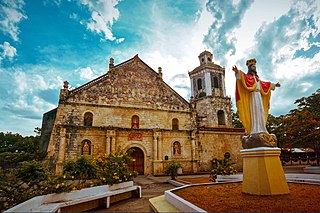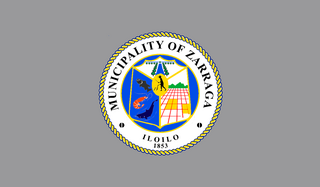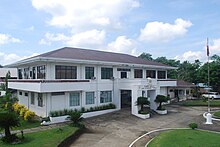
Pototan, is a 1st class municipality in the province of Iloilo, Philippines. According to the 2020 census, it has a population of 78,298 people.

Buenavista, officially the Municipality of Buenavista, is a 2nd class municipality and the largest settlement in the province of Guimaras, Philippines. According to the 2020 census, it has a population of 52,899 people.

Barotac Nuevo, officially the Municipality of Barotac Nuevo, is a 2nd class municipality in the province of Iloilo, Philippines. According to the 2020 census, it has a population of 58,176 people.

Sibunag, officially the Municipality of Sibunag, is a 4th class municipality in the province of Guimaras, Philippines. According to the 2020 census, it has a population of 23,162 people.

San Lorenzo, officially the Municipality of San Lorenzo, is a 5th class municipality in the province of Guimaras, Philippines. According to the 2020 census, it has a population of 29,444 people.

Nueva Valencia, officially the Municipality of Nueva Valencia, is a 3rd class municipality in the province of Guimaras, Philippines. According to the 2020 census, it has a population of 42,771 people.

Ivisan, officially the Municipality of Ivisan, is a 4th class municipality in the province of Capiz, Philippines. According to the 2020 census, it has a population of 31,278 people.

Panitan, officially the Municipality of Panitan, is a 3rd class municipality in the province of Capiz, Philippines. According to the 2020 census, it has a population of 42,565 people.

Pontevedra, officially the Municipality of Pontevedra, is a 3rd class municipality in the province of Capiz, Philippines. According to the 2020 census, it has a population of 49,725 people.

Badiangan, officially the Municipality of Badiangan, is a 4th class municipality in the province of Iloilo, Philippines. According to the 2020 census, it has a population of 27,056 people.

Batad, officially the Municipality of Batad, is a 5th class municipality in the province of Iloilo, Philippines. According to the 2020 census, it has a population of 22,157 people.

Calinog, officially the Municipality of Calinog, is a 1st class municipality in the province of Iloilo, Philippines. According to the 2020 census, it has a population of 62,853 people.

Lambunao, officially the Municipality of Lambunao, is a 1st class municipality in the province of Iloilo, Philippines. According to the 2020 census, it has a population of 81,236 people.

Lemery, officially the Municipality of Lemery, is a 4th class municipality in the province of Iloilo, Philippines. According to the 2020 census, it has a population of 31,414 people.

New Lucena, officially the Municipality of New Lucena, is a 4th class municipality in the province of Iloilo, Philippines. According to the 2020 census, it has a population of 24,314 people.

San Dionisio, officially the Municipality of San Dionisio, is a 4th class municipality in the province of Iloilo, Philippines. According to the 2020 census, it has a population of 39,048 people.

San Joaquin, officially the Municipality of San Joaquin, is a 2nd class municipality in the province of Iloilo, Philippines. According to the 2020 census, it has a population of 52,617 people.

San Miguel, officially the Municipality of San Miguel, is a 4th class municipality in the province of Iloilo, Philippines. According to the 2020 census, it has a population of 30,115 people.

Sara, officially the Municipality of Sara, is a 2nd class municipality in the province of Iloilo, Philippines. According to the 2020 census, it has a population of 54,637 people.

Zarraga, officially the Municipality of Zarraga, is a 4th class municipality in the province of Iloilo, Philippines. According to the 2020 census, it has a population of 27,305 people.






























